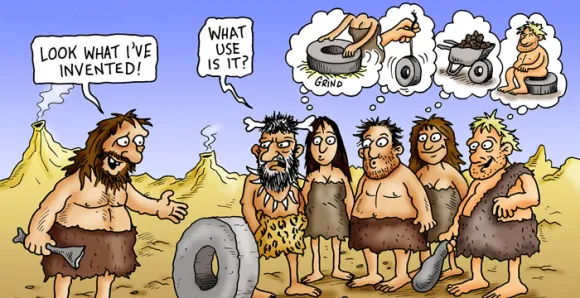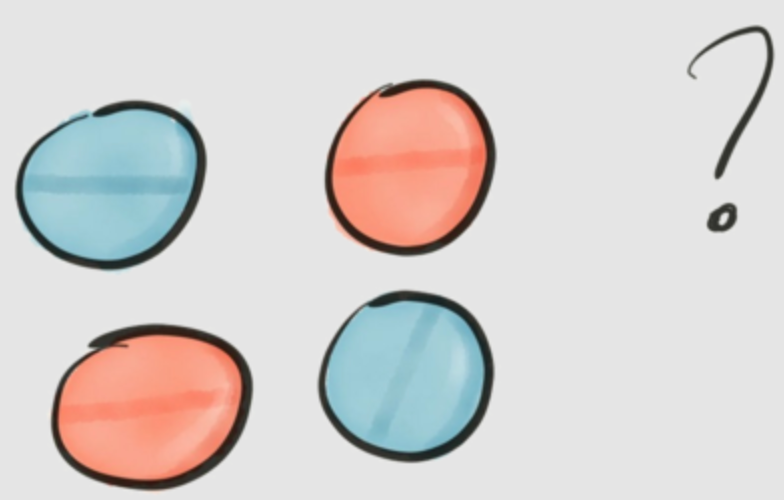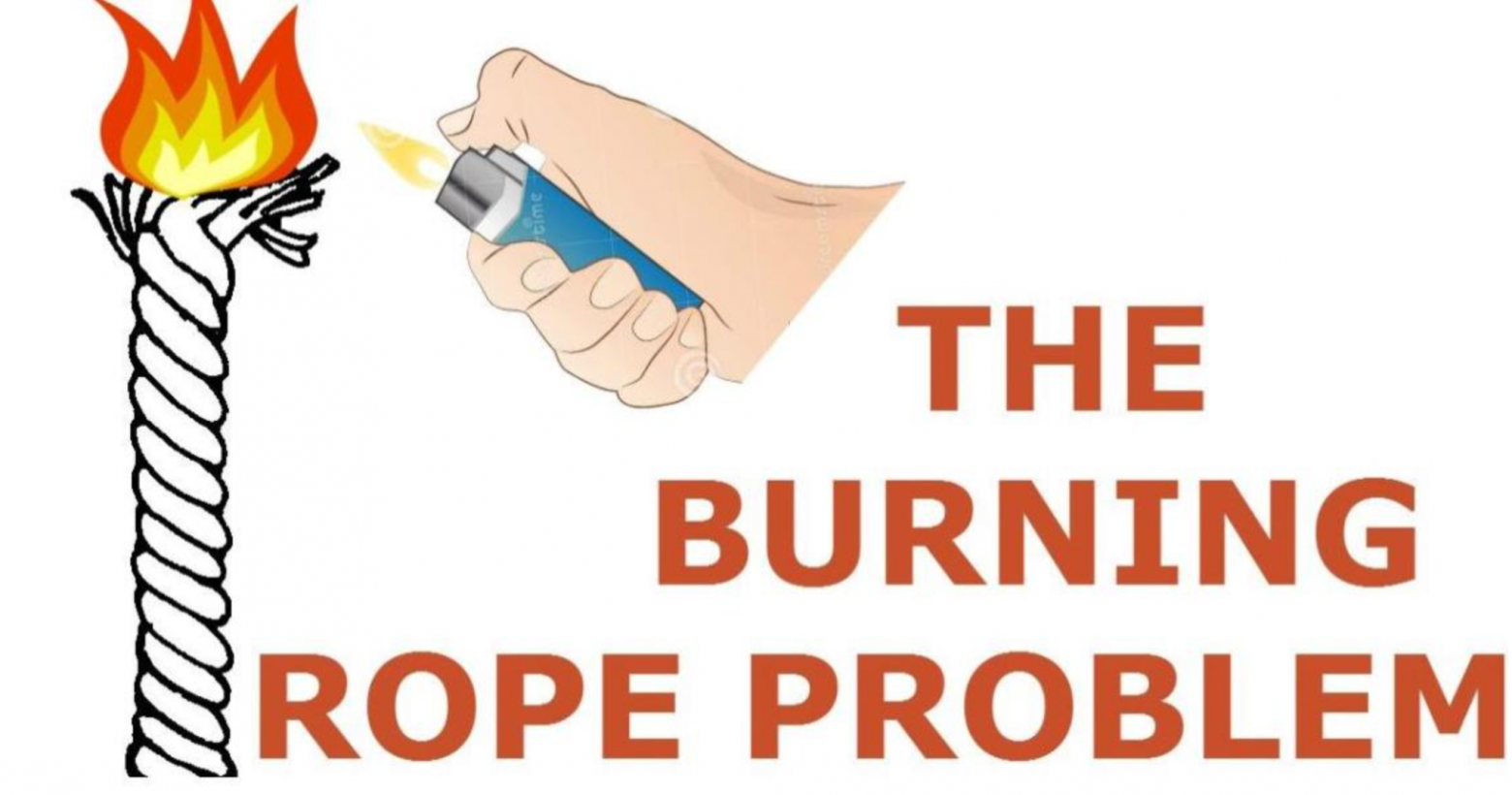
Background
As a product manager with over a decade of experience, I'm always looking for new ways to enhance my skills and help other product managers advance in their careers. One area that many companies focus on during the job interview process is analytical and creative problem-solving. And as product managers, we encounter these types of challenges on a daily basis. It's important to stay sharp and continuously develop our problem-solving abilities. That's why I made it a habit to practice a logic puzzle every day. But I also wondered if there was a common approach to solving these puzzles. That's when I discovered TRIZ – the Theory of Inventive Problem Solving. In this article, I'll provide an overview of what TRIZ is and how it can be applied in product management. Then, I'll apply TRIZ principles to solve a series of logical puzzles, showcasing the power and effectiveness of this methodology. So whether you're an experienced product manager looking to enhance your skills or someone who enjoys a good brain teaser, read on to discover the power of TRIZ!
If you find TRIZ to be a useful tool for problem-solving and innovation, there are many resources available to help you delve deeper into the methodology. The TRIZ Journal, for example, offers enough information on TRIZ, including case studies, articles, and other resources. You can also find books and online courses that provide a more in-depth look at TRIZ and how it can be applied in different industries and contexts. So if you're interested in learning more, there are plenty of opportunities to expand your knowledge and apply TRIZ to your work.
Introduction
Are you tired of boring, technical articles on problem-solving methodologies that put you to sleep? Well, fear not! This article on TRIZ promises to be different. We'll take a fresh look at how TRIZ can help you solve problems and innovate like a pro. Developed by a scientist Genrich Altshuller who was probably a lot more fun than his job title suggests, TRIZ is a problem-solving methodology that can help individuals and organizations overcome obstacles, reduce waste, and generate innovative solutions. So sit back, relax, and get ready to learn about TRIZ in a way that won't make you want to hit snooze.
TRIZ is a powerful problem-solving methodology that was created by the Soviet engineer and scientist Genrich Altshuller. Altshuller was a patent clerk who, in the 1940s, began analyzing patents to identify patterns and principles that could help inventors overcome obstacles and generate innovative solutions to complex challenges. This led to the development of TRIZ, which has since been used by organizations worldwide to enhance their product development processes and boost their overall innovation capabilities.
TRIZ includes 40 principles that are designed to guide problem-solving and innovation. These principles are based on the analysis of thousands of patents and the identification of patterns and solutions that can be applied to a wide range of problems. The TRIZ principles cover a broad range of topics, including reducing harm or waste, increasing efficiency, improving reliability, and enhancing functionality. Examples of these principles include the use of segmentation, the integration of parts, the use of porous materials, and the use of energy transitions. By understanding and applying these principles, individuals and organisations can overcome obstacles and generate more innovative and effective solutions to complex problems, leading to increased productivity, reduced costs, and improved customer satisfaction.
By leveraging TRIZ principles and tools, product managers can better identify and resolve issues, optimise existing products, and develop new ones that meet customer needs more effectively. This article will explore how TRIZ can be applied in product management and discuss some of the key benefits that this approach can offer to companies looking to improve their product development processes. From analyzing customer feedback to optimizing production processes, TRIZ can provide a structured approach for product managers to identify and address challenges, resulting in more innovative and successful products.
TRIZ Fundamentals
It's important to note that this article does not aim to provide a comprehensive analysis of each TRIZ principle and its application in product management. Rather, our goal is to offer a brief introduction to TRIZ as a tool for solving innovation challenges in the product development process.
TRIZ principles can be broadly categorised into four groups, also known as the four TRIZ innovation principles. These categories are Resources, Contradictions, Ideality, and Evolution.
1. The first group, Resources, includes principles that focus on how to make the most effective use of available resources, such as time, money, and materials. Examples of principles in this category include "Merging," which involves combining multiple functions or processes to save resources, and "Local Quality," which involves improving the quality of a specific part of a product or process to avoid wasting resources.
2. The second group, Contradictions, includes principles that are designed to help resolve contradictions or trade-offs between different aspects of a problem, such as cost versus quality. Examples of principles in this category include "Separation," which involves separating conflicting elements of a problem, and "Uniformity," which involves making different parts of a product or process more uniform to avoid contradictions.
3. The third group, Ideality, includes principles that aim to optimize a product or system by increasing its functionality while minimizing any negative impact on the environment or other factors. Examples of principles in this category include "Self-Service," which involves designing a product or process to require minimal external help, and "Simplicity," which involves reducing the number of components or processes to minimize waste.
4. The fourth and final group, Evolution, includes principles that focus on how to anticipate and prepare for changes in the market, technology, and other external factors, and how to leverage these changes to create new opportunities for innovation. Examples of principles in this category include "Continuity of Useful Action," which involves designing a product or process to continue functioning even when conditions change, and "Rapid Improvement," which involves quickly adapting to changes in the market or technology to stay ahead of the competition.
40 TRIZ PRINCIPLES
Each of four category includes principles that are designed to help individuals and organizations solve complex problems more effectively.
Resources. The 15 principles in this category are: Segmentation, Taking out, Local quality, Asymmetry, Merging, Universality, Nesting, Anti-weight, Preliminary anti-action, Prior counteraction, Cushioning, Equipotentiality, The other way round, Spheroidality, Dynamics.
Contradictions. The 16 principles in this category are: Universality, Preliminary action, Nesting, "Beforehand cushioning", Equipotentiality, "The other way around", "Spheroidality", "Dynamics", Partial or excessive actions, Another dimension, Another environment, Mechanical vibration, Periodic action, Preliminary action, The transition to a micro-level, Flexible shells and thin films, Porous materials.
Ideality. The 6 principles in this category are: Universality, Nesting, Equipotentiality, The other way round, Spheroidality, Dynamics, Segmentation.
Evolution. The 3 principles in this category are: Transition to a micro-level, Another dimension, Another environment.
PUZZLES: Ready to Exercise Your Brain?
As a product manager, one of the core responsibilities is to solve problems and develop innovative solutions that meet customer needs while balancing the constraints of time, budget, and resources. To accomplish this, product managers must be skilled in both analytical and creative thinking. I’ll use commonly known puzzles to illustrate how TRIZ can be applied to these challenges to generate more effective and innovative solutions.
This classic puzzle about the fox, hen, and corn is a popular game that has been enjoyed for centuries, and it's also frequently used as an interview question to test problem-solving abilities.
A farmer needs to transport a fox, a hen, and a sack of corn across a river. However, his boat is only big enough to transport one item at a time. If he leaves the fox alone with the hen, the fox will eat the hen. If he leaves the hen alone with the corn, the hen will eat the corn. How can the farmer transport all three items across the river without any of them being eaten?

The TRIZ principle of "The other way round" could be applied to the Fox/Hen/Corn puzzle. This principle suggests turning a problem or challenge on its head and looking at it from a different perspective. In the case of the puzzle, one could apply this principle by considering the possibility of transporting the fox, hen, and corn in the opposite direction across the river. By reversing the direction of transport, the solution to the problem may become clearer or easier to implement.
Base on this principle the solution to the puzzle will be:
1. The farmer takes the hen across the river and leaves it on the other side.
2. The farmer goes back across the river and takes the corn with him, but before leaving it on the other side, he brings the hen back to the original side.
3. The farmer leaves the hen on the original side and takes the fox with him to the other side.
4. He leaves the fox on the other side with the corn.
5. The farmer goes back across the river and brings the hen to the other side, leaving the corn and the fox on the other side.
6. Finally, the farmer goes back across the river one more time to get the corn and bring it to the other side, completing the task without any of the items being eaten.
THE ELECTRICITY CHALLENGE: Solve the Puzzle and Light Up Your Mind!
You are in a room with three light switches on the wall. Each switch controls one of three lamps in the next room, but you cannot see into the next room. You are allowed to flip the switches however you like, but you can only enter the next room once. How can you determine which switch controls each lamp?

TRIZ principle Partial or Excessive Actions could be applied to the bulb puzzle. The principle suggests modifying an action by dividing it into parts or increasing its intensity beyond its necessary level. In the context of the bulb puzzle, one possible application of this principle could be to turn on the first lamp for an excessive amount of time. By doing so, the first lamp would become significantly warmer than the other two lamps, which would remain cold. This would create a clearer distinction between the lamps, making it easier to identify which one is which when entering the room.
Based on this TRIZ principle a possible solution to the puzzle of the three lamps:
Turn on the first lamp and leave it on for a few minutes.
Turn off the first lamp and immediately turn on the second lamp.
Enter the room and feel the lamps. The lamp that is off but still warm to the touch is the first lamp, the lamp that is on is the second lamp, and the lamp that is off and cold is the third lamp.
PILL POWER
The puzzle involves a blind man who finds himself stranded on an uninhabited island with four pills - two blue and two red. He needs to take one red and one blue pill to survive, but taking two of the same color will result in his death. With no one else on the island to assist him, the blind man must figure out a way to safely take the correct combination of pills.

The Partial or Excessive Action principle suggests taking only a portion of an object or system to solve the problem. In this case, the blind man can take only a portion of each pill (e.g., half of each blue pill and half of each red pill) to achieve the desired combination of one red and one blue pill.
The Merging principle can also be applied by combining the two halves of the pills to form the desired combination. By breaking down the pills into smaller parts and then merging them in the correct way, the blind man can successfully solve the problem.
The solution to this puzzle is to split each of the pills in half, creating four halves in total. Then, the blind man can take one half of the blue pill and one half of the red pill, thus achieving his goal of getting one of each color without overdosing on either.
SOLVING THE CAMELS PUZZLE
A sheikh tells his two sons to race their camels to a distant city to see who will inherit his fortune. The one whose camel is slower will win. The brothers, after wandering aimlessly for days, ask a wise man for advice. After hearing the advice, they jump on the camels and race as fast as they can to the finish line. What advice did the wise man give them?

The TRIZ principle "Merging" suggests combining or merging different elements or components to create a new solution. In the case of the camel puzzle, the two sons could merge their resources by swapping camels, allowing them to both have a chance at winning the race and achieving their objective of having the camel come last.
The solution is for the two sons to swap their camels and ride as fast as possible to the distant city. The winner of the race will be the son whose camel comes second, since the objective is to have the camel come last.
WATER GLASSES PUZZLE
There are six glasses in a row. The first three are full of water, and the next three are empty. By moving only one glass how can you make them alternate between full and empty?

The TRIZ principle "Separation in Time or Space" suggests separating an object in time or space to allow for a change to occur, rather than directly manipulating the object itself. In the case of the glass puzzle, pouring water from one glass to another is a way to separate the water from the original glass and allow for the desired configuration to be achieved.
The solution is to pour the water from the second glass into the fifth glass, making the arrangement full, empty, full, empty, full, empty.
ROPES AND LIGHTERS
You have two ropes and a lighter. Each rope takes exactly one hour to burn from one end to the other. However, the rope doesn't burn at a consistent rate, so cutting the rope in half might not be a reliable way to measure 30 minutes. Using only these two ropes and a lighter, how can you measure exactly 45 minutes?

The Segmentation principle can be applied to the burning ropes puzzle. By breaking the rope into smaller segments, you can measure smaller time intervals.
The solution to the puzzle involves lighting one rope at both ends and the other rope at one end only. The first rope will burn completely in 30 minutes (since it is burning twice as fast), while the second rope will be half burned at that point. Then, the remaining half of the second rope can be ignited from the other end and will burn completely in 15 more minutes. This way, we get a total burning time of 45 minutes.
CONCLUSION
As we wrap up this article on TRIZ and problem-solving, it's important to note that TRIZ is not a magic wand that can solve all problems with a flick of the wrist. If only it were that easy! While TRIZ is a powerful tool for problem-solving and innovation, it still requires hard work, creativity, and persistence. But with TRIZ, you'll have a better framework for tackling those entertaining problems and coming up with more effective solutions.
So whether you're an experienced product manager looking to enhance your skills or a curious mind in search of a good challenge, give TRIZ a try. It's like the Swiss Army Knife of problem-solving methodologies – versatile, powerful, and always ready to help you tackle any problem that comes your way. And who knows, you might just discover a hidden talent for solving puzzles and impressing your colleagues with your newfound TRIZ skills. Happy problem-solving!
Meet the author: Aleksei Badianov

Aleksei Badianov is an accomplished and respected professional in the field of Product Management, known for his impressive achievements and exceptional leadership. With a primary focus on developing delivery route optimization solutions, Aleksei has successfully served numerous delivery and distribution companies across 12 countries. Through his innovative approach, he has optimized an impressive daily volume of over 100,000 deliveries, resulting in significant environmental benefits by reducing CO2 emissions by a remarkable 1,631,320 kg annually.
Beyond the tangible results, Aleksei's impact goes far beyond numbers. He has played a pivotal role in driving positive transformations within leading companies and cutting-edge startups. His unwavering commitment to personal and professional growth has kept him at the forefront of the rapidly evolving Product Management landscape.Throughout his career, Aleksei has consistently showcased his exceptional leadership skills by effectively leading teams of various sizes, ranging from 10 to 50 members, in both dynamic startup and corporate environments. His deep understanding of Product Management principles, coupled with his visionary approach, has yielded remarkable achievements and successful outcomes.
Aleksei's contributions and expertise have garnered recognition from esteemed Product Management communities, prestigious educational institutions, and mentoring platforms. He has become a trusted advisor and mentor, generously sharing his knowledge and insights to guide and empower aspiring Product Managers on their own career journeys.
With an unrelenting drive for improvement and a passion for innovation, Aleksei Badianov remains a highly sought-after professional in the Product Management field. His exceptional contributions, groundbreaking solutions, and unwavering dedication to personal growth stand as a testament to his remarkable abilities and enduring commitment to making a positive impact within the industry.